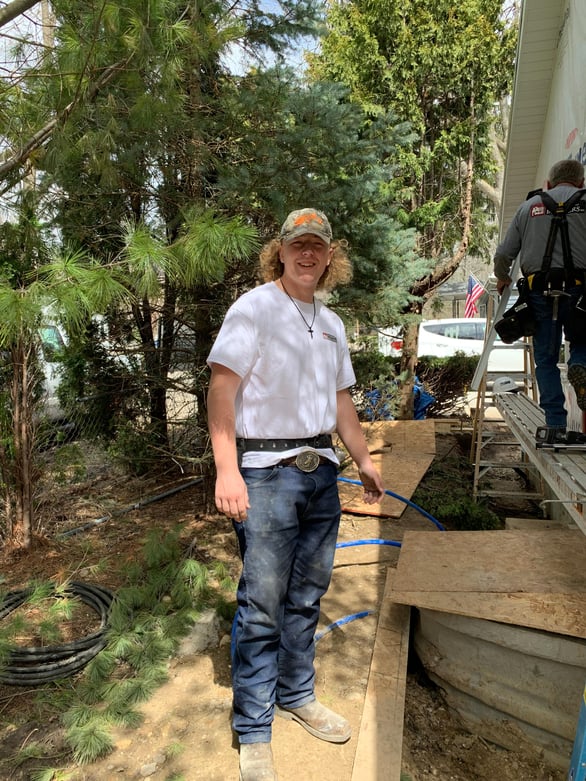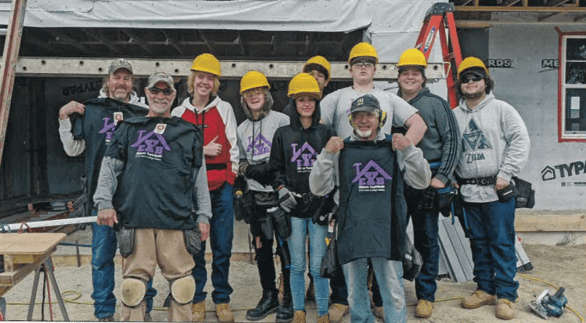To Do or Not To Do. Home Issues That Could Be More Costly If Left Undone. Stebnitz Builders, Delavan, WI
Need to get your spring "Honey Do" list of home projects completed, but concerned about the cost to do it this year? Here are six projects from the MSN Real Estate site that can cost you more by waiting to get them completed instead of doing them today and the benefits they bring by regularly completing them.
The price of neglect
In this economy, you may be tempted to delay or even skip minor home-maintenance repairs, cleaning jobs and inspections in your home. But don't be penny-wise and dollar-foolish. That $200 or $300 you save today could result in expenditures of $3,000 or even tens of thousands next month or next year if hidden problems in your home go unnoticed and become worse.
Consider coughing up a little dough to take care of these small jobs before they morph into gigantic, expensive jobs later.
Annual HVAC inspection
Cost: $200 to $300, depending on where you live.
How often: At least annually
When: Spring or fall. Heating, ventilation and air-conditioning companies aren't as busy then, and you won't be in dire need of heat or air conditioning.
What an inspection might find:
- The furnace blower is not working properly. Cost to repair or replace: $100 to $150. Possible consequence of letting it go: a broken heat exchanger. Potential savings down the road: $300 to $1,000 to replace the heat exchanger or $750 to $3,500, depending on the energy efficiency, to replace indoor or outdoor furnace components.
- The reversing switch in the heat pump is broken. Cost to repair or replace: $100 to $300. Letting it go results in no heat from the heat pump, and the system switches to more expensive auxiliary heat. Potential savings: lower heating bills.
Bottom line: "Things that happen often happen at the worst possible time in the worse possible conditions, and you're looking at the maximum rate," says Terry Townsend of Townsend Engineering in Chattanooga, Tenn., and former president of the American Society of Heating, Refrigerating and Air-Conditioning Engineers. Remember, continual maintenance prolongs the life of the equipment. "You're sitting there with an investment of thousands (of dollars) in your HVAC system, and you're investing a few hundred dollars in maintenance," Townsend says.
Chimney inspection
Cost: $65 for an inspection, $150 for inspection and cleaning, including removal of creosote buildup, which may lead to a chimney fire.
How often: Annually.
When: Before your first fire in the winter.
What an inspection might find:
- There's no chimney cap. Cost to add: $150. If you let it go, rain can get into your chimney, damage the chimney liner and damper, and even saturate mortar joints, causing mold. Potential savings: $2,000 to $4,000 to replace the chimney liner.
- Other problems may include a cracked chimney crown, which can be repaired for $300 to $500; chimney flashing that needs caulking, which can be done for $80 to $100; and waterproofing the exterior brick, which runs $350 to $600. All of these fixes will prevent rain from entering and mold from forming.
Bottom line: "A simple chimney cleaning can prevent chimney fires and damage to your entire house," says Ray Gessner, a licensed professional engineer and owner of A Step in Time Chimney Sweeps, with offices in the Eastern U.S. "Water is the No. 1 problem with chimneys. With water damage, you might need to have your whole chimney rebuilt."
Termite inspection
Cost: $75 to $200 for an inspection, $200 to $300 for a termite-protection contract for qualifying homes with no current evidence of termites to cover treatment and repairs for later infestations.
How often: Annually.
When: Any time, although termites are more active in spring and early summer.
An inspection might find subterranean termites or flying termites. If left untreated, these bugs damage framing, trim, drywall, furniture, carpet, and copper and other soft metals. Termites cause more than $5 billion in damage a year in the U.S., says Paul Curtis, director of quality assurance for Terminix in Memphis, Tenn. The average homeowner loss for termite damage is $3,000, but losses can be as high as $30,000 or even $80,000, Curtis says. Most homeowners insurance does not cover repair of termite damage.
Bottom line: "Termites eat the wood from the inside out," Curtis says. "A typical homeowner would not be aware they are even in the home until months or years after they get in and start causing damage. A lot of people don't realize that termites don't just feed on the home. They'll eat flooring, insulation, books — I've even seen them penetrate through swimming-pool liners."
Power-washing and sealing a wood deck
Cost: $100 to $300 for a 200-square-foot deck, more for a larger deck.
How often: Every one to three years, depending on the amount of traffic, moss and mold.
When: Any time in sunny weather.
Power-washing gets rid of stains, algae, mold, mildew and moss. Algae and mold can make your deck slippery and dangerous, says Justin Lee of JL Power Washing in Williamsburg, Va. Sealing your deck after it is cleaned helps prevent water damage. Wood soaks up rain like a sponge, expands and then shrinks, Lee says. Sealing makes the water bead up and roll off. And let's not forget: Your deck will look nicer, too.
If you let it go, your deck will warp, nails will pop out and the deck won't last as long.
Potential savings: $4,000 to $20,000 or more to replace your deck, depending on size.
Bottom line: "A properly cleaned and sealed wood deck can last 20 to 30 years," Lee says.
Dryer-vent cleaning
Cost: $120 to $200.
How often: Annually.
When: A sunny day.
The purpose is to get rid of lint buildup. If your dryer is not on an exterior wall, the vent leading outside likely is clogged, says Ray Gessner, owner of A Step in Time Chimney Sweeps.
If you ignore it, you could have a disastrous fire.
Potential savings: Your home, your furnishings, your belongings and your life.
Bottom line: "Once the vent gets clogged, the dryer starts overheating and it can catch on fire," Gessner says. "Dryer fires are very dangerous."
Carpet cleaning
Cost: About 50 cents per square foot for hot-water extraction cleaning or $500 for 1,000 square feet of cleaned carpet.
How often: Every year, more often for high-traffic areas and homes with small children, pets or smokers. Manufacturers' warranties may require cleaning every 18 to 24 months. You can save money by focusing on regular cleanings for high-traffic areas and waiting as long as two years for the entire carpet.
When: Any time.
If the carpet looks dirty, you've waited too long, because some soil can't be removed with vacuuming. This soil will bind to your carpet and dull the texture, shortening the life of the carpet.
Cleaning also can remove pollen, bacteria, insecticides and dirt, says Howard Partridge, founder and president of Clean as a Whistle, a cleaning company near Houston.
Potential savings: Extending the life of your carpet. Replacing 1,000 square feet of medium-grade carpet, including padding and installation, costs about $3,000.
Bottom line: "One of my neighbors had to replace his carpet in less than four years," Partridge says. "And his carpet looked terrible the whole time. I've been able to keep my carpet for 12 years now."
Contact Stebnitz Builders today to discuss your "Honey-Do" list and let us help you put together a plan to get it finished before the cost of avoidance dwarfs the cost to complete it in the first place. Call (800) 410-8027 to have your own Stebnitz Builders consultant come out to help you through all the issues. Serving all of Walworth County, as well as Northern Il, Stebnitz Builders can help you plan to save money, eliminate heartache AND cross off a few of those items from your list.





